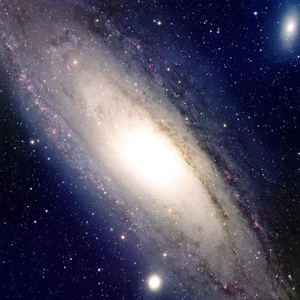CSAM Astronomer Seigar Wows World’s Science Media
UALR Professor Marc Seigar’s paper presented at the American Astronomical Society meeting in St. Louis wowed the international science press this week with his new method to size super-massive black holes in far distant galaxies.
So far, reporters for the “National Geographic,” “USA Today,” and “Science Daily” have posted stories on their website on Seigar’s theories, and he was the subject of an interview with the BBC.
Seigar, assistant professor of physics and astronomy in the College of Science and Mathematics, and his research team have concluded that the larger the black hole at the center of a spiral galaxy, the tighter the galaxy’s arms wrap around itself. If correct, the simple relationship would give researchers an easy way to learn about black holes.
“This is a really easy way to determine the masses of these super-massive black holes at the centers of galaxies that are very far away,” Seigar said. “This gives us a way to measure the size of these far away black holes.”
Since super-massive black holes were discovered in nearby galaxies, researchers have been determining their masses by looking at how fast the stars were moving in the very central regions of those galaxies. But that method only works for relatively nearby galaxies, Seigar said.
“For the most distant galaxies you have to develop alternative methods,” Seigar said. “And we have developed such a method.”
 The method he described to the Astronomical Society involves taking a snapshot of a distant galaxy and measuring how tightly the spiral arms wrap around the galaxy, or the wrapping angle. He determined that the more massive the black hole, the tighter the spiral arms wrap around the galaxy, which indicates a small wrapping angle.
The method he described to the Astronomical Society involves taking a snapshot of a distant galaxy and measuring how tightly the spiral arms wrap around the galaxy, or the wrapping angle. He determined that the more massive the black hole, the tighter the spiral arms wrap around the galaxy, which indicates a small wrapping angle.
Seigar’s team studied photographs of 27 spiral galaxies, including our galaxy, the Milky Way, and its nearest neighbor, the Andromeda Galaxy. Galaxies with the smallest black holes had spiral arms with wrapping angles of up to 43 degrees. Those with the biggest black holes had spiral arms at angles of only seven degrees between their central bulges.